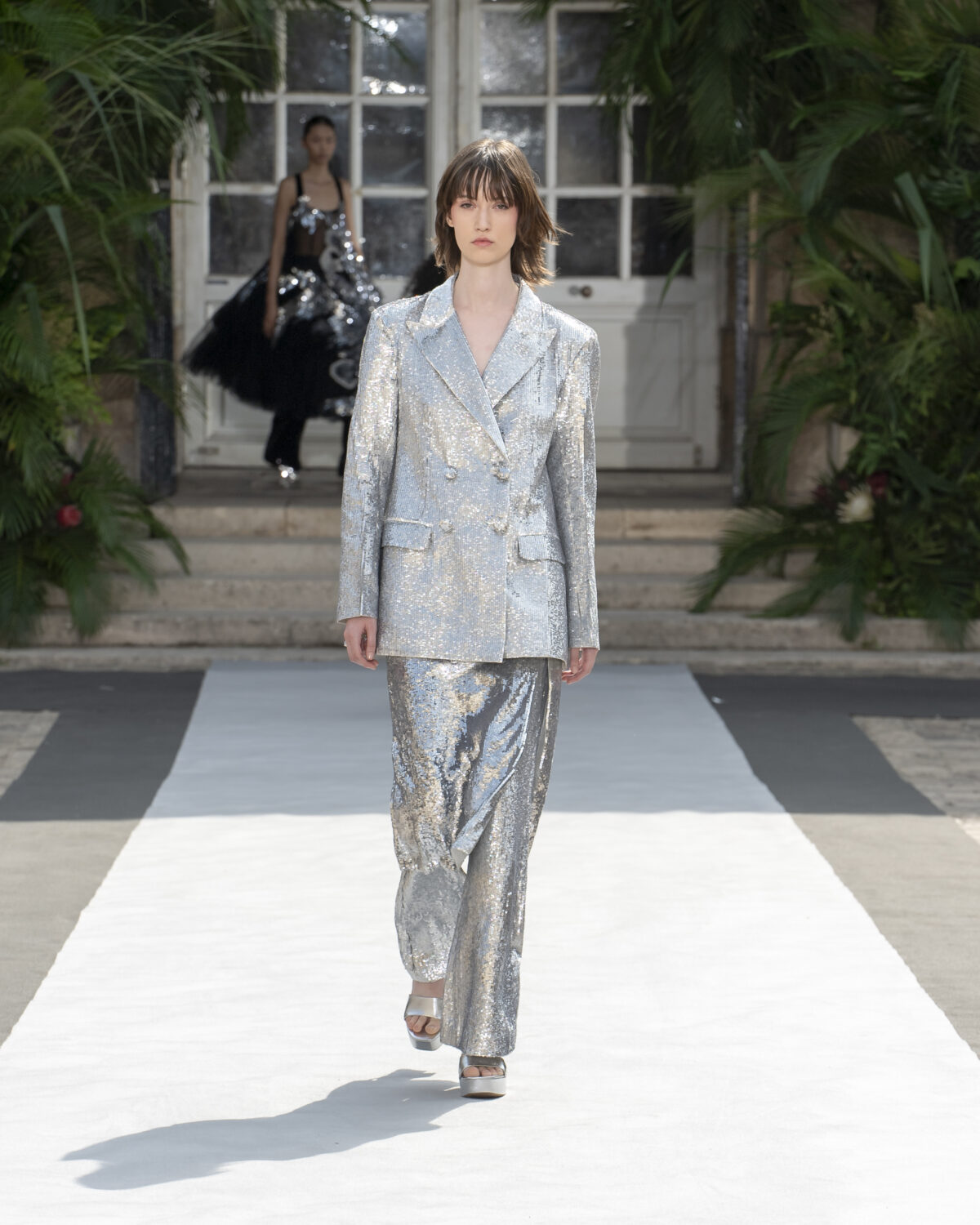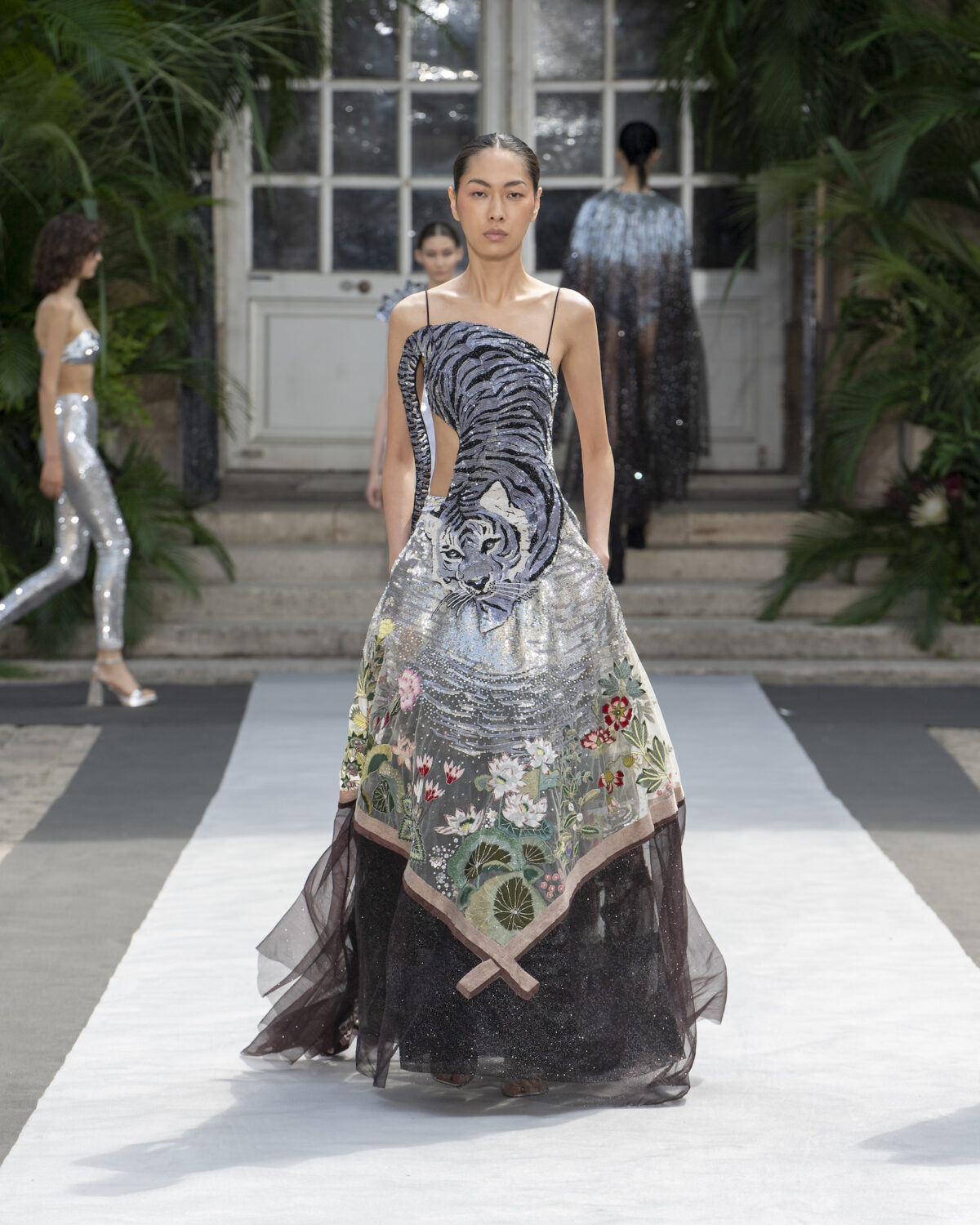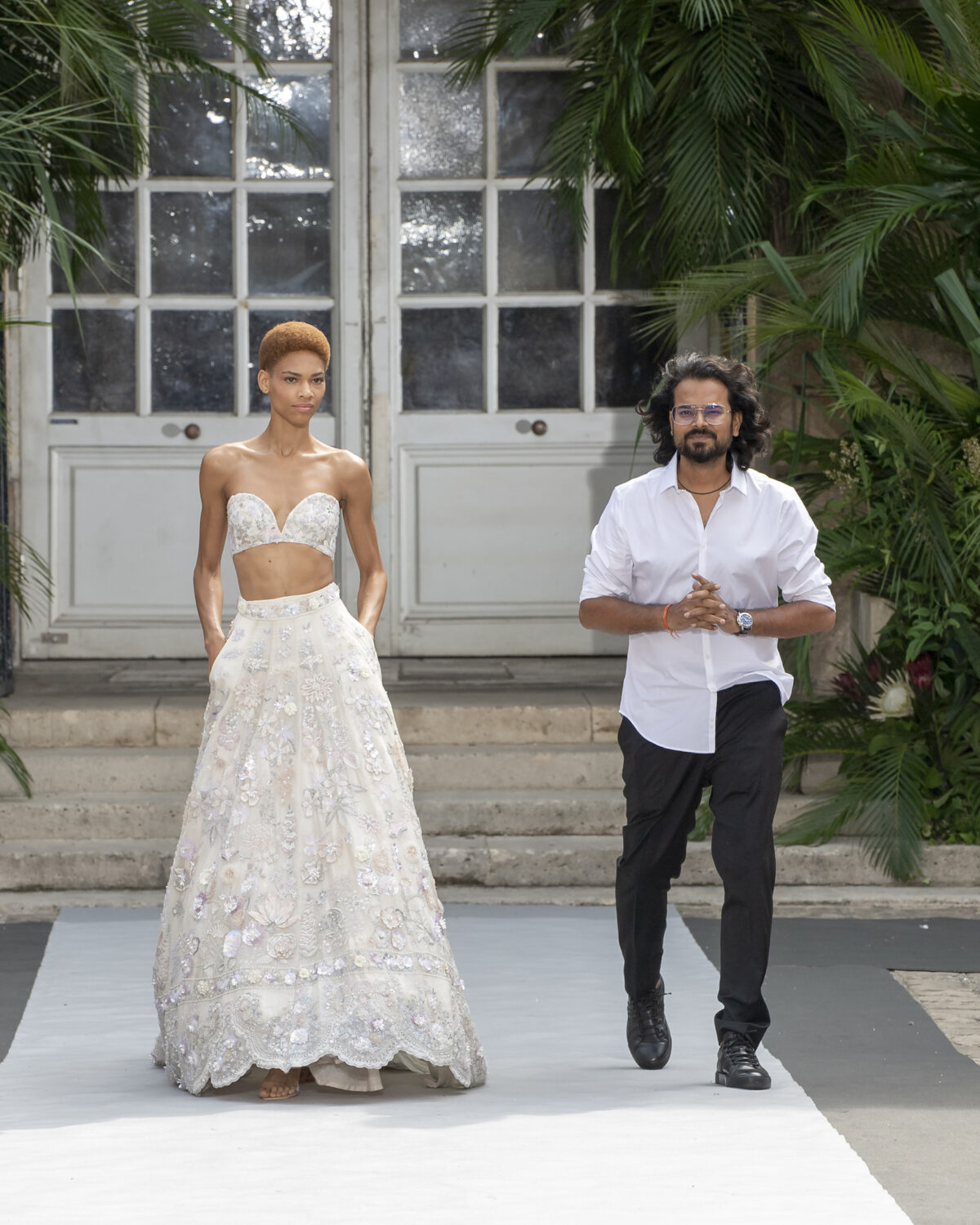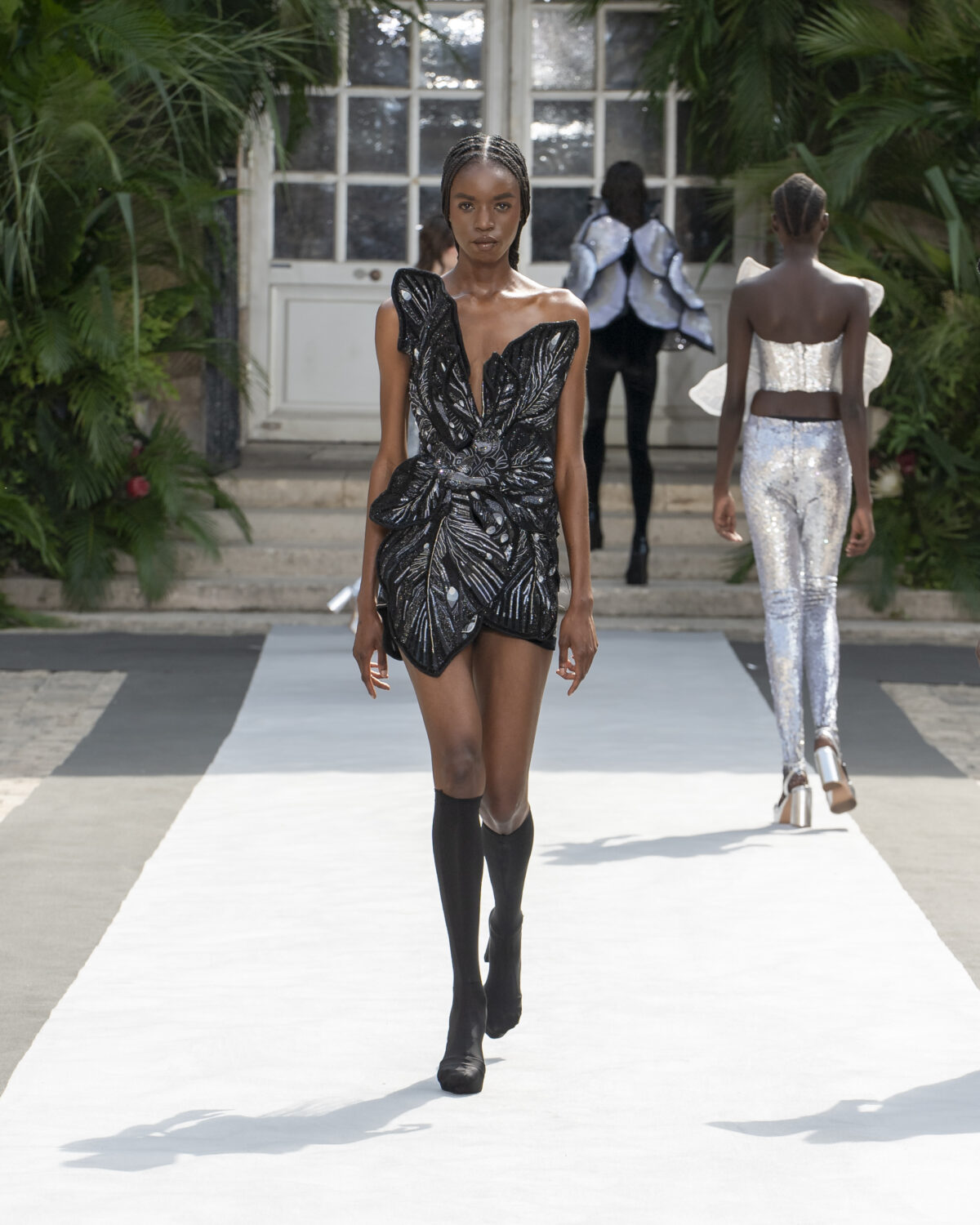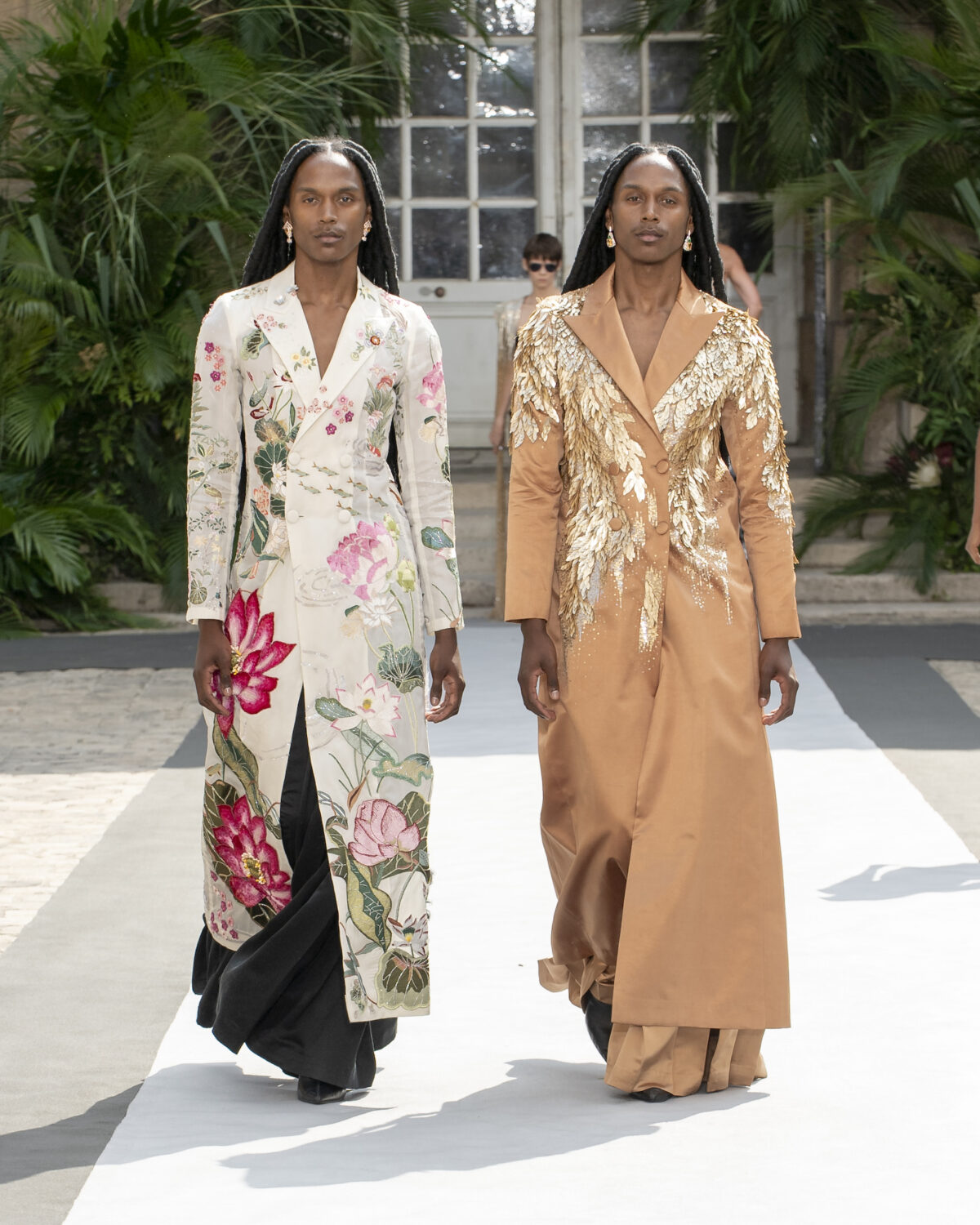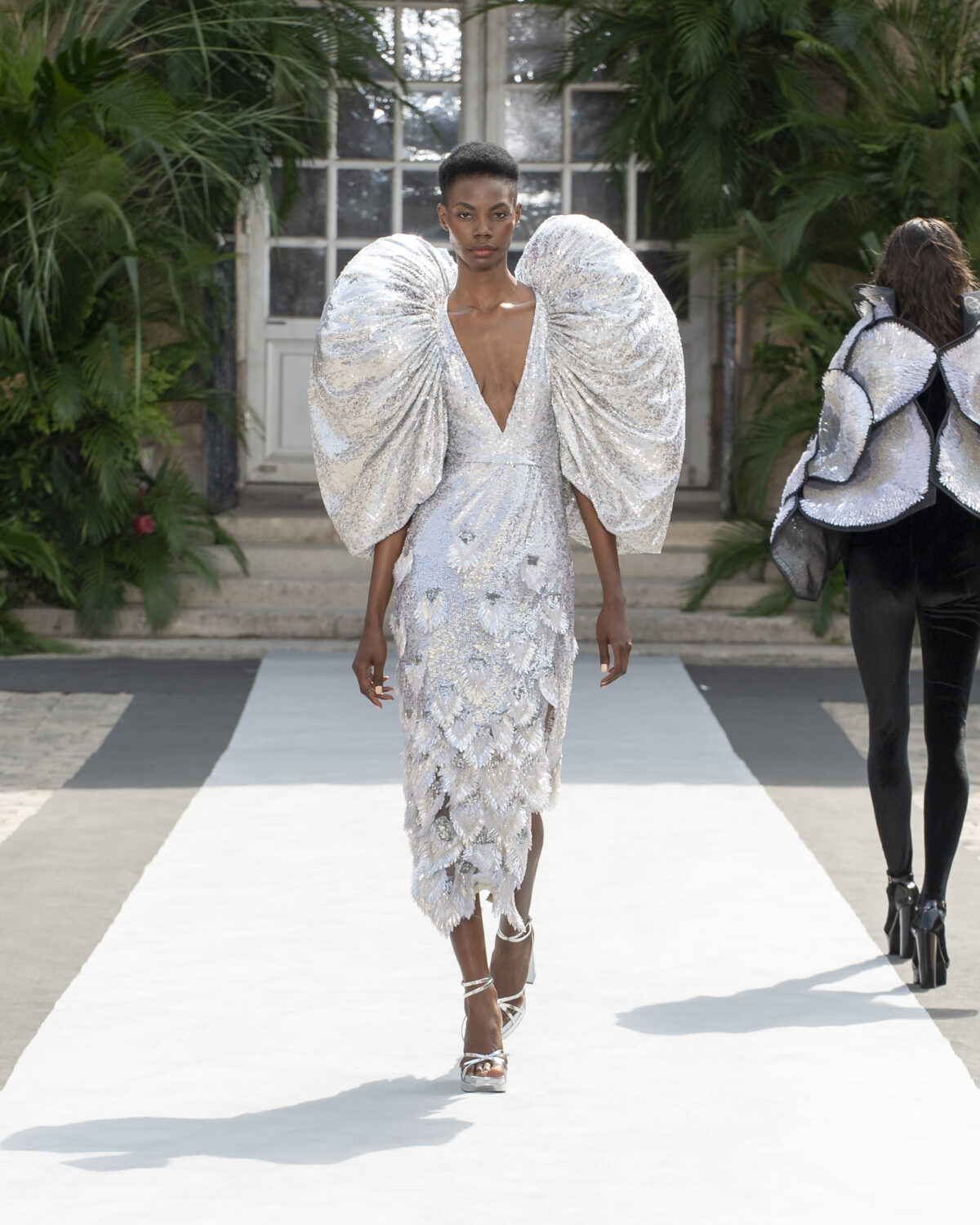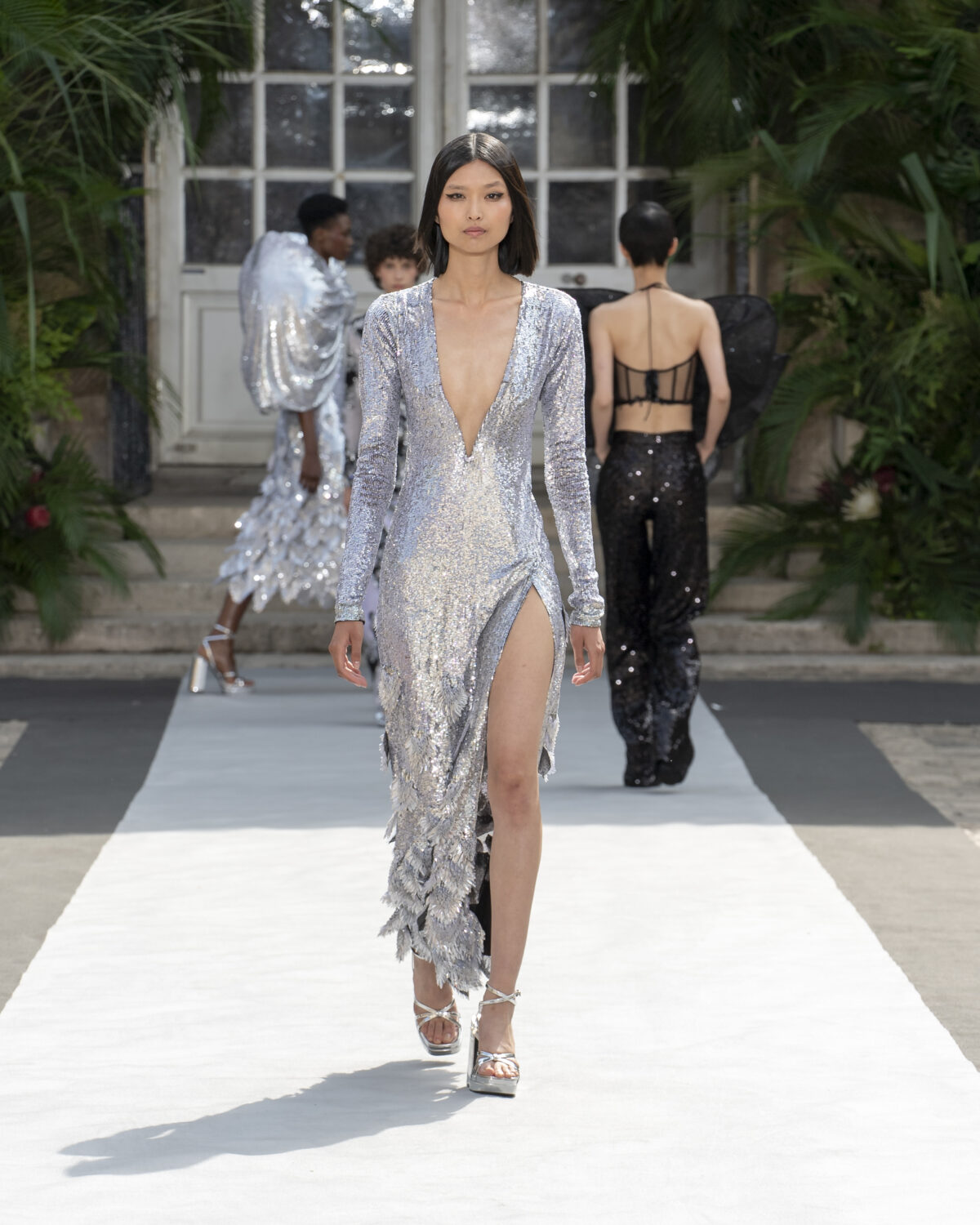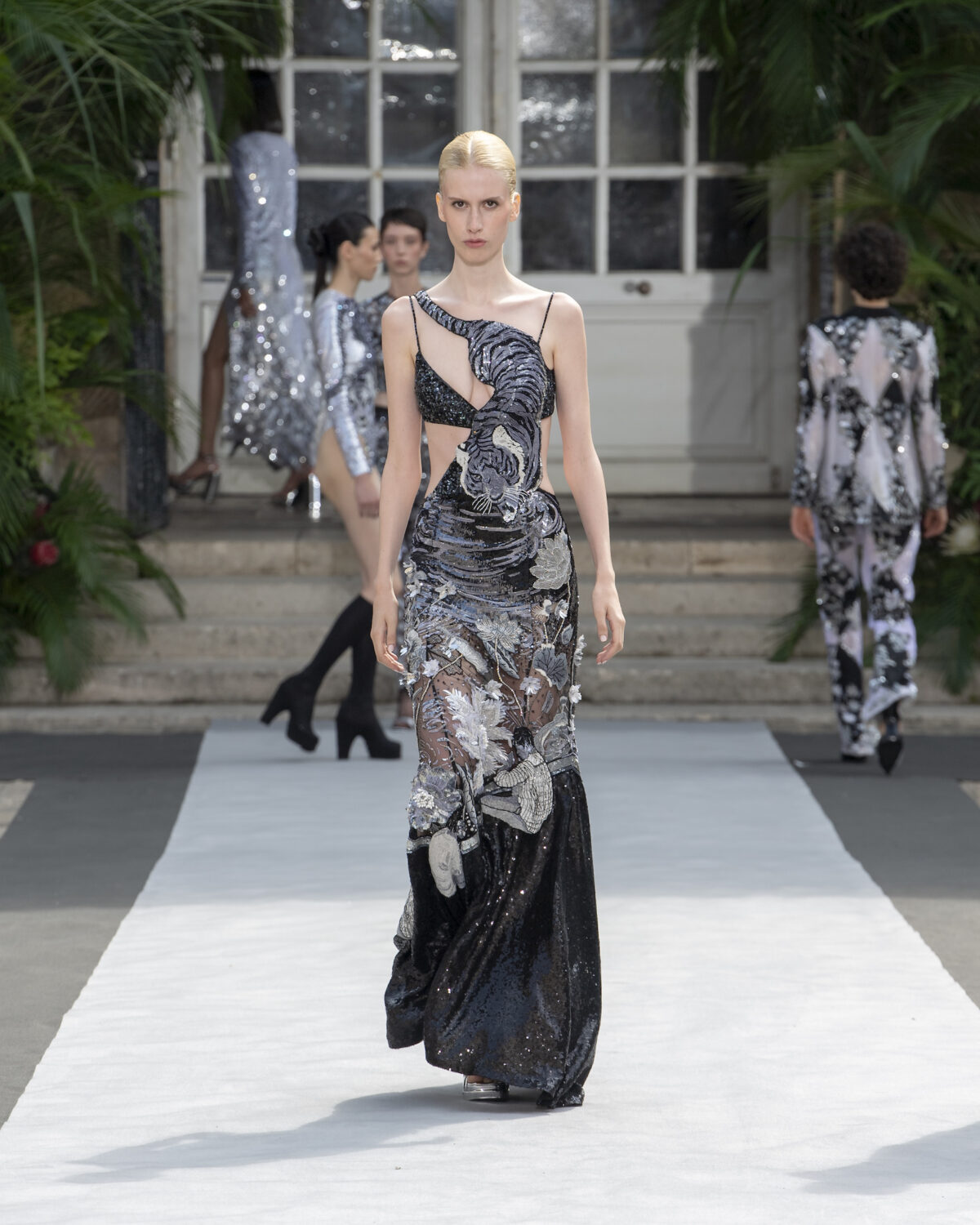
Rahul Mishra conquering the Haute Couture Fashion Week in Paris
Rahul Mishra:
„GOD MUST BE AN EMBROIDERER!“
Rahul Mishra is the first Indian designer to show his creations at the Paris Haute Couture Week. For the fall/winter 2023 season, he had the models walk the catwalk with elaborately embroidered designs. With his brand he is committed to slow fashion and the preservation of traditional Indian handicrafts.
Rahul Mishra. The designer who became the first Indian creative to conquer Paris Haute Couture Week. For the fall/winter 2023 season, he showed his designs, which had already received a lot of attention, on the high tailoring catwalk. Elaborately embroidered dresses could be seen, some of which attracted attention with artistic animal and plant motifs. Sequins, shine and transparency as style-defining elements created moving, multi-layered impressions.
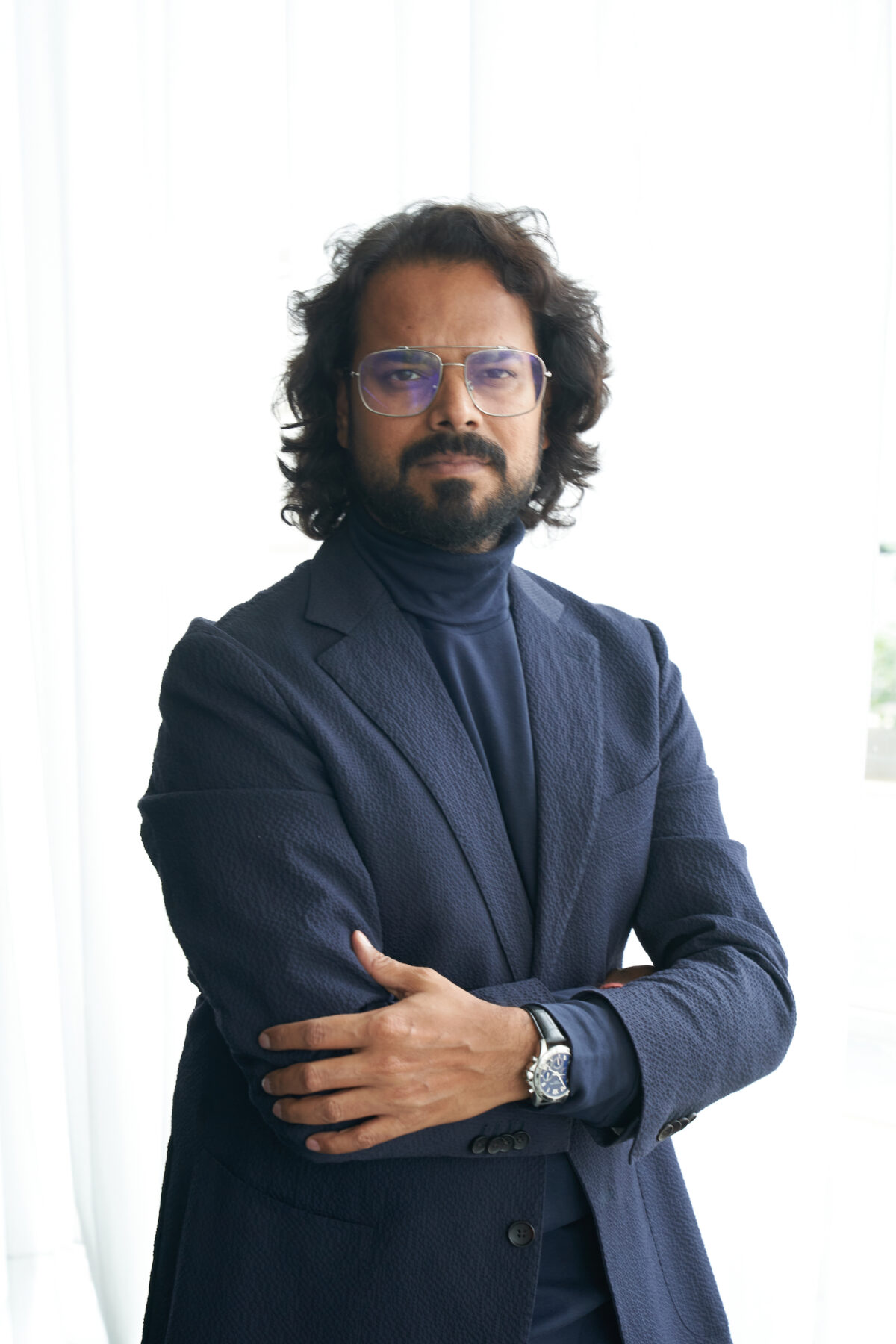
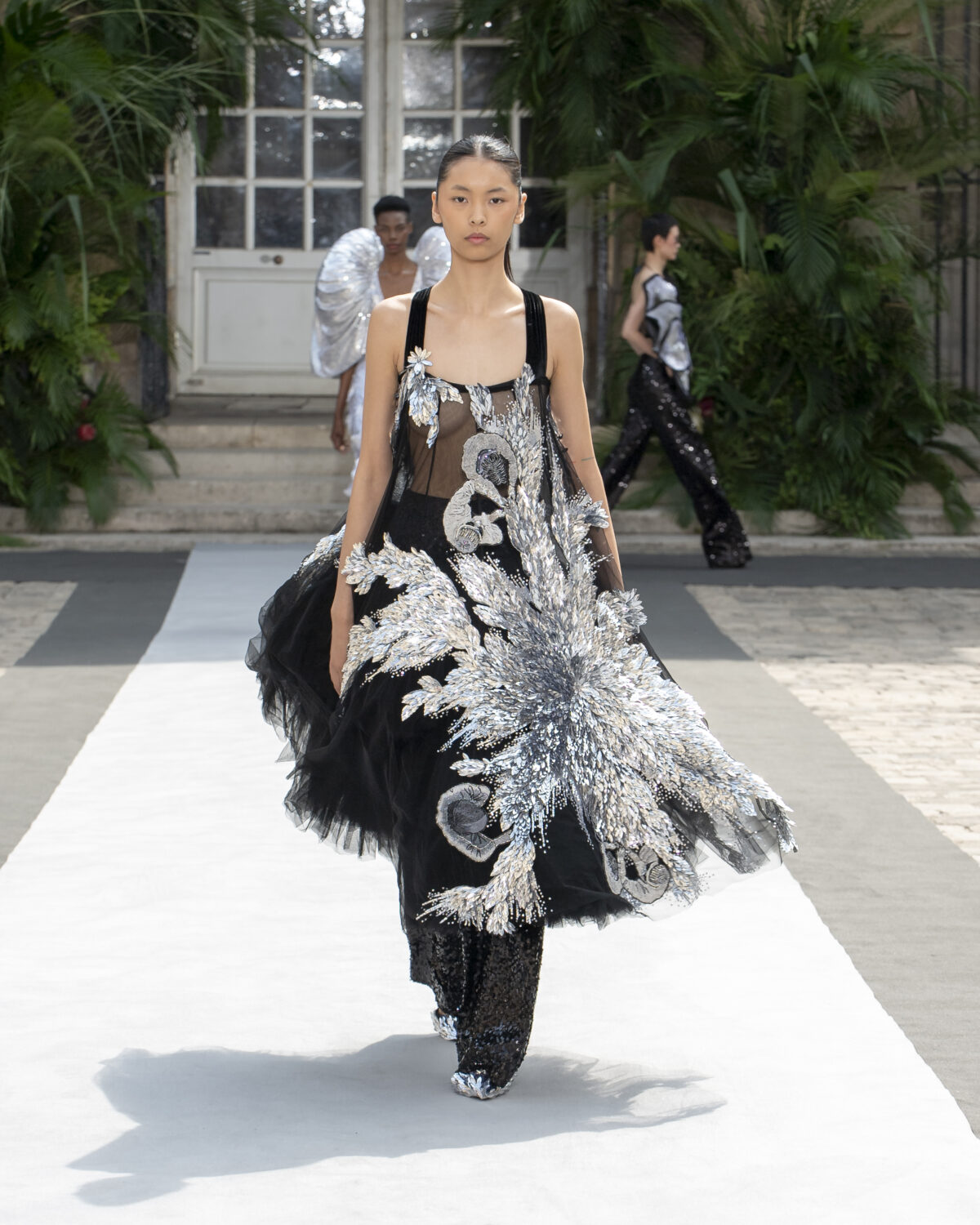
The design house is based on the ‚philosophy of the three E’s‘ – Environment, Employment and Empowerment.
Fashion designer Rahul Mishra.
The entire collection was presented under the guideline ‚We, the people‘. Because: The importance of people is an important anchor point in the production process for the brand with two flagship stores in New Delhi and Mumbai. Mishra supports ideas about slow fashion and sustainability. He wants to use his fashion as a tool to strengthen the local craft community in India. The late Franca Sozzani, former editor-in-chief of Italian Vogue, is said to have once praised Mishra for “highlighting the best and the most peculiar features of his country”.
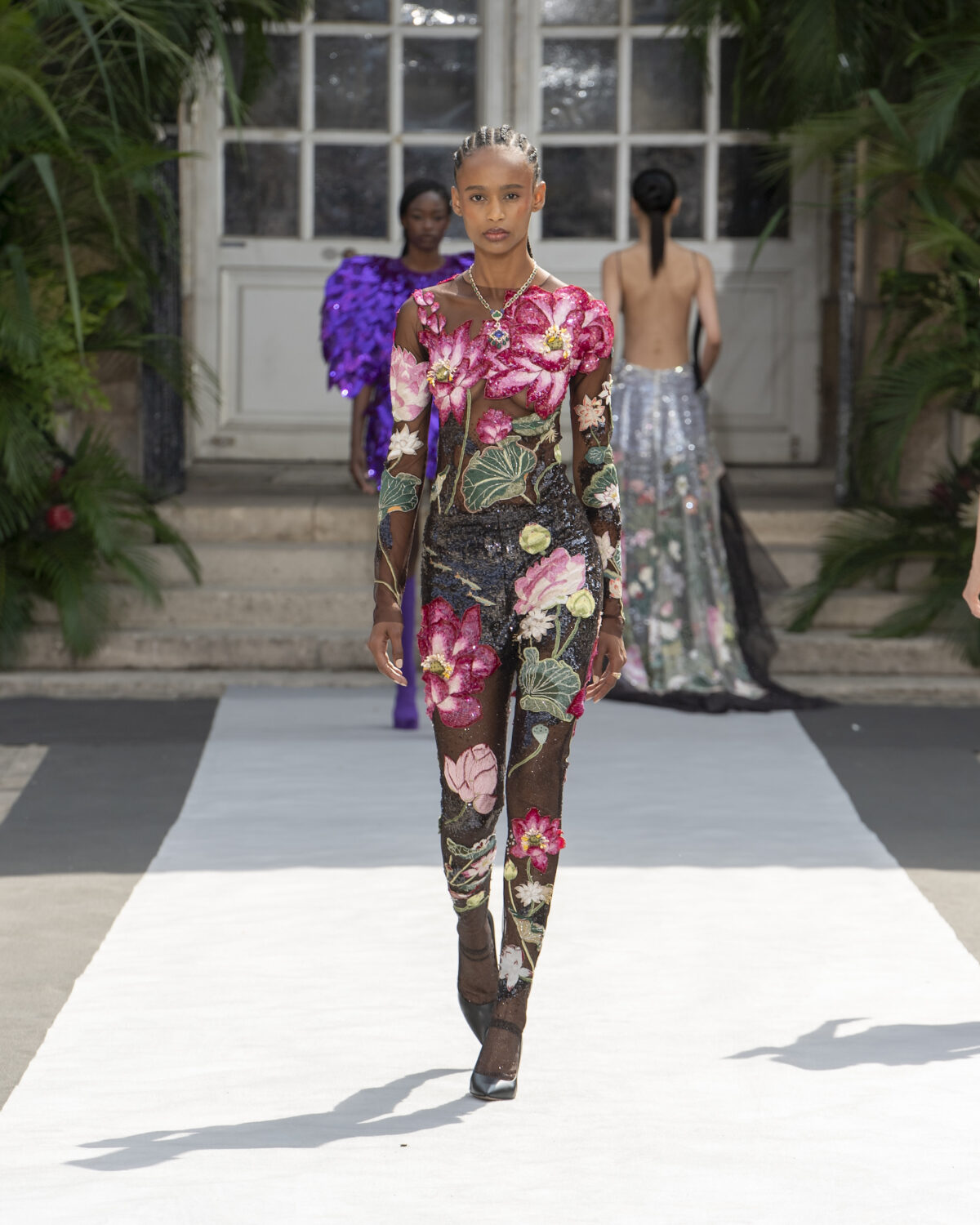
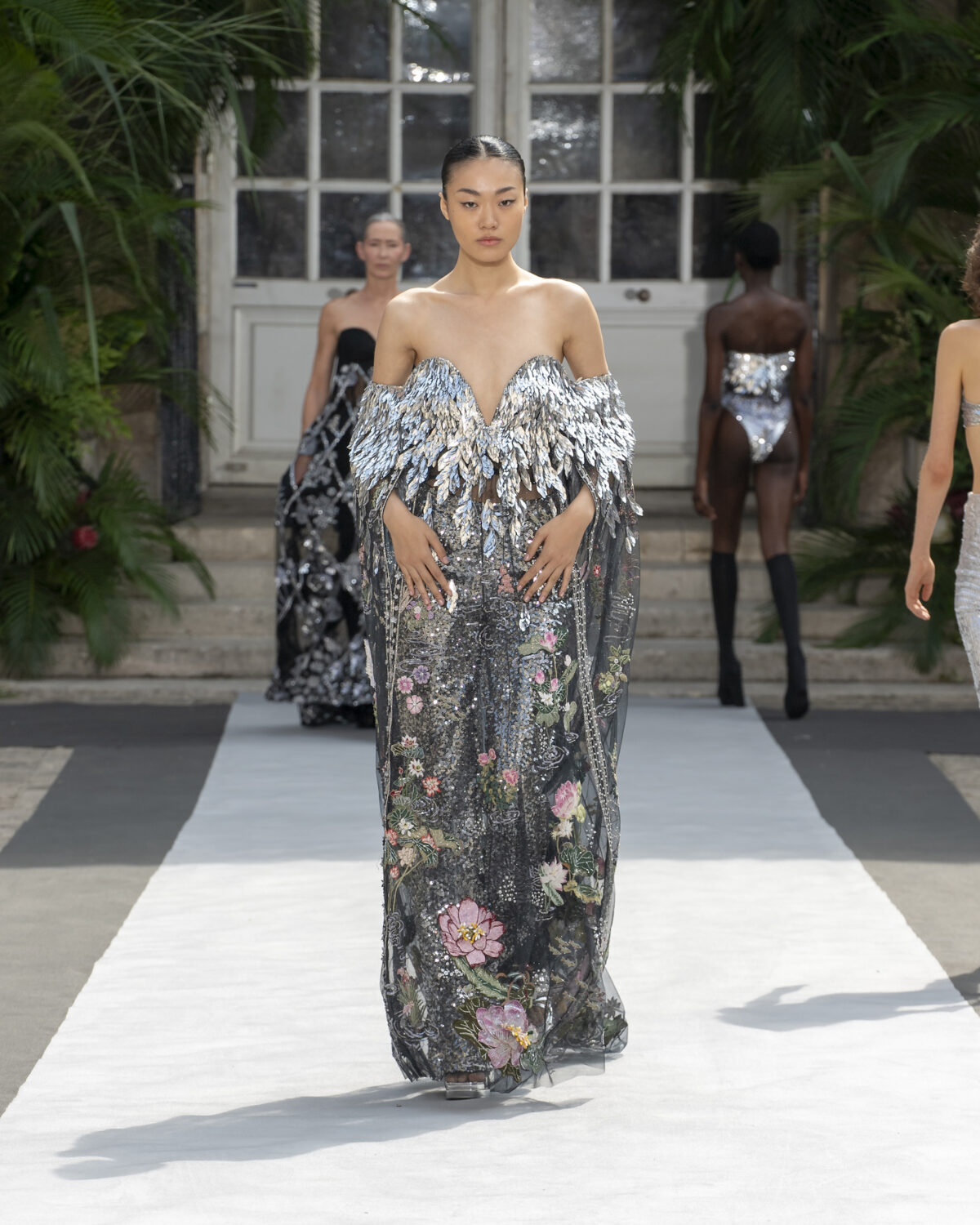
The design house is based on the ‚philosophy of the three E’s‘ – Environment, Employment and Empowerment. It is the declared goal not only to look at luxury from the perspective of consumption, but also to take into account the aspect of co-determination and local participation. All designs were created in Indian studios. On average, an haute couture design required around 3,000 hours to complete, depending on the silhouette.
Mishra wants to put the artisans at the center of his stories. He sees this as an interface where artistic expression meets craftsmanship and technical know-how. He believes they have the unique ability to turn fantasy into reality. In this context, the studio is understood as a complex organism in which every organ works towards a common goal. And the community’s contribution should be appropriately valued. The cultural preservation of traditional crafts is also promoted by supporting remigration – from work in densely populated sub-factories of large cities to employment in small communities in Indian villages.
